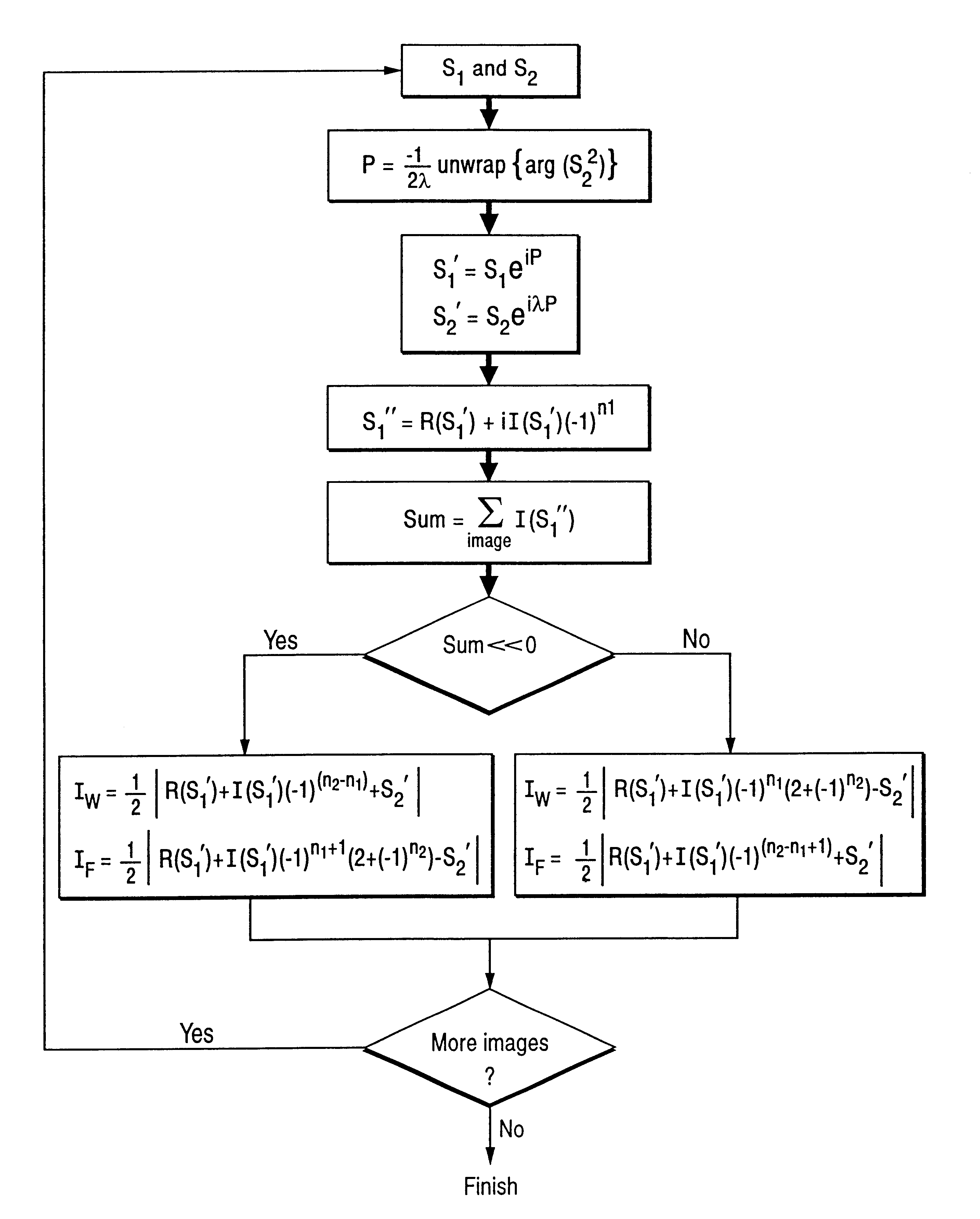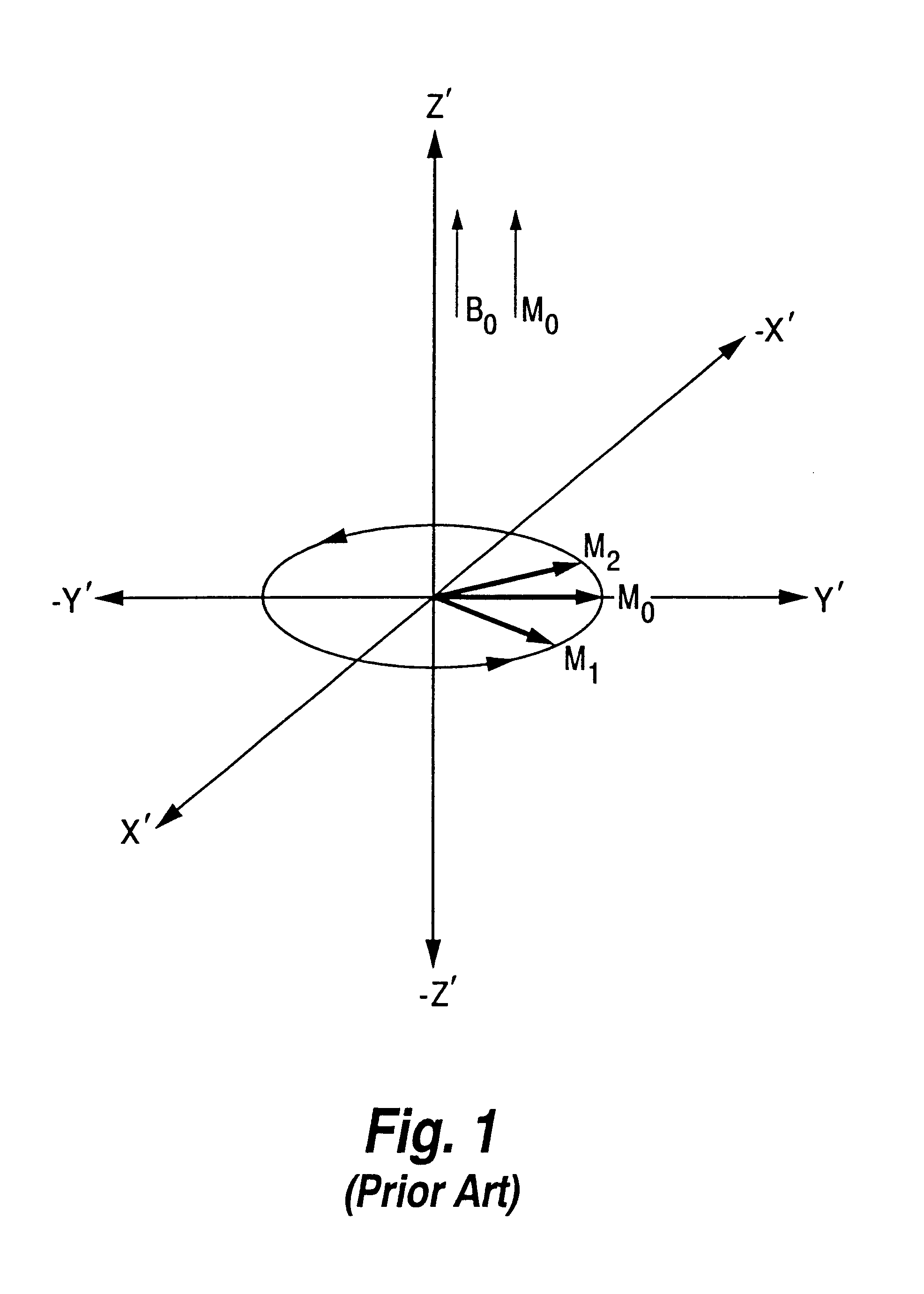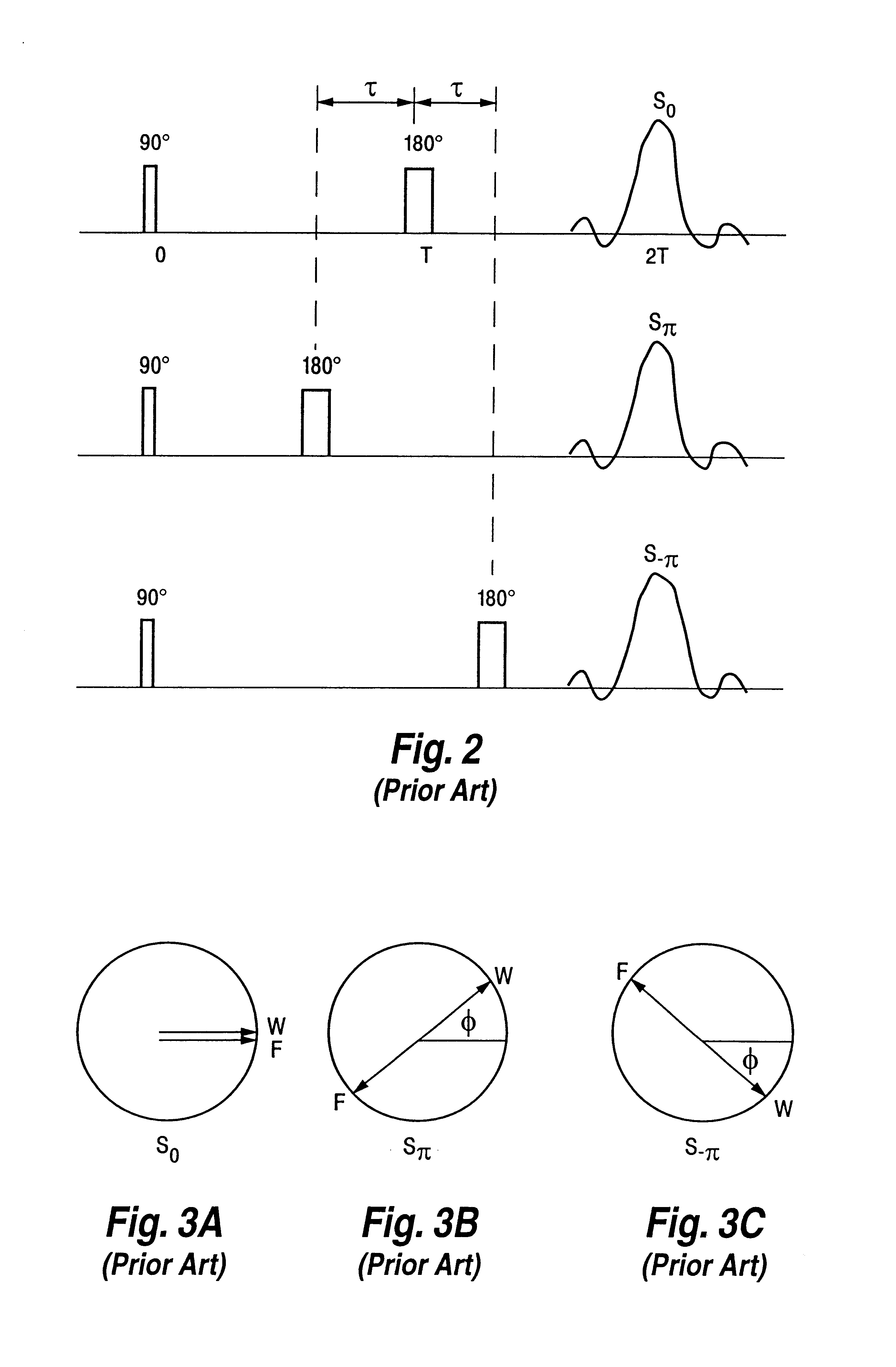Separation and identification of water and fat MR images at mid-field strength with reduced T2/T2* weighting
a technology of mr images and weighting, applied in the field of mr image separation and identification of water and fat at mid-field strength, can solve the problems of requiring at least three mr scans, slow approaches, and inability to completely achieve mr images, and achieve the effect of reducing t.sub.2 and t.sub.2 * weighting
- Summary
- Abstract
- Description
- Claims
- Application Information
AI Technical Summary
Benefits of technology
Problems solved by technology
Method used
Image
Examples
case 1 (
when the reference is water-dominant): ##EQU9##
case 2 (
when the reference is fat-dominant): ##EQU10##
A complete data processing procedure for separating and identifying water and fat images is summarized schematically in the flowchart shown in FIG. 7.
One implementation of the above-described method of data acquisition is a field-echo sequence which acquires two echo images with n.sub.1 =0 and n.sub.2 =1, such that .lambda.=2. At 0.35 Tesla, then TE.sub.1 =4.75 ms and TE.sub.2 =9.50 ms for water and fat separation. The sequence can be used in either two-dimensional (2D) or three-dimensional (3D) imaging modes. FIGS. 8 and 9 are diagrams of the pulse sequencer for such 2D and 3D data acquisition.
Referring to FIG. 6, a spin-echo imaging sequence of the present invention basically consists of an RF nuclei nutation ("excitation") pulse, 40, accompanied by the generation of a slice selection gradient pulse, G.sub.slice, and a phase encoding gradient pulse, G.sub.pe, followed by three appropriately timed read-out gradient pulses, G.sub.read, 4...
PUM
 Login to View More
Login to View More Abstract
Description
Claims
Application Information
 Login to View More
Login to View More - R&D
- Intellectual Property
- Life Sciences
- Materials
- Tech Scout
- Unparalleled Data Quality
- Higher Quality Content
- 60% Fewer Hallucinations
Browse by: Latest US Patents, China's latest patents, Technical Efficacy Thesaurus, Application Domain, Technology Topic, Popular Technical Reports.
© 2025 PatSnap. All rights reserved.Legal|Privacy policy|Modern Slavery Act Transparency Statement|Sitemap|About US| Contact US: help@patsnap.com



